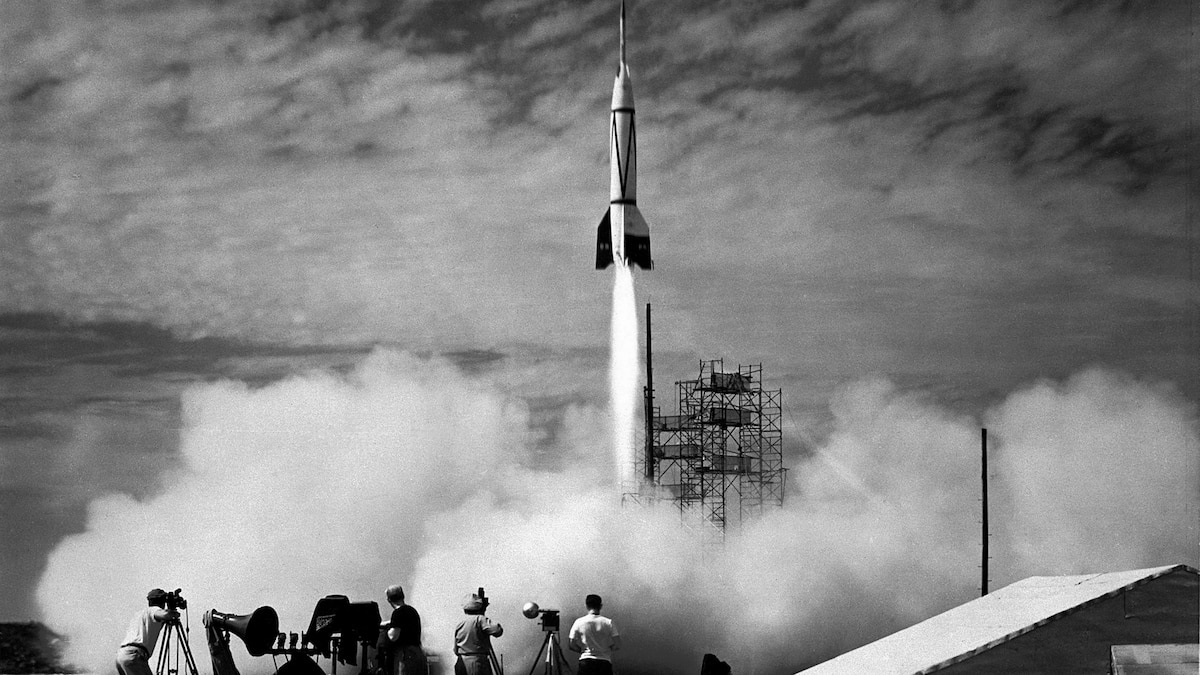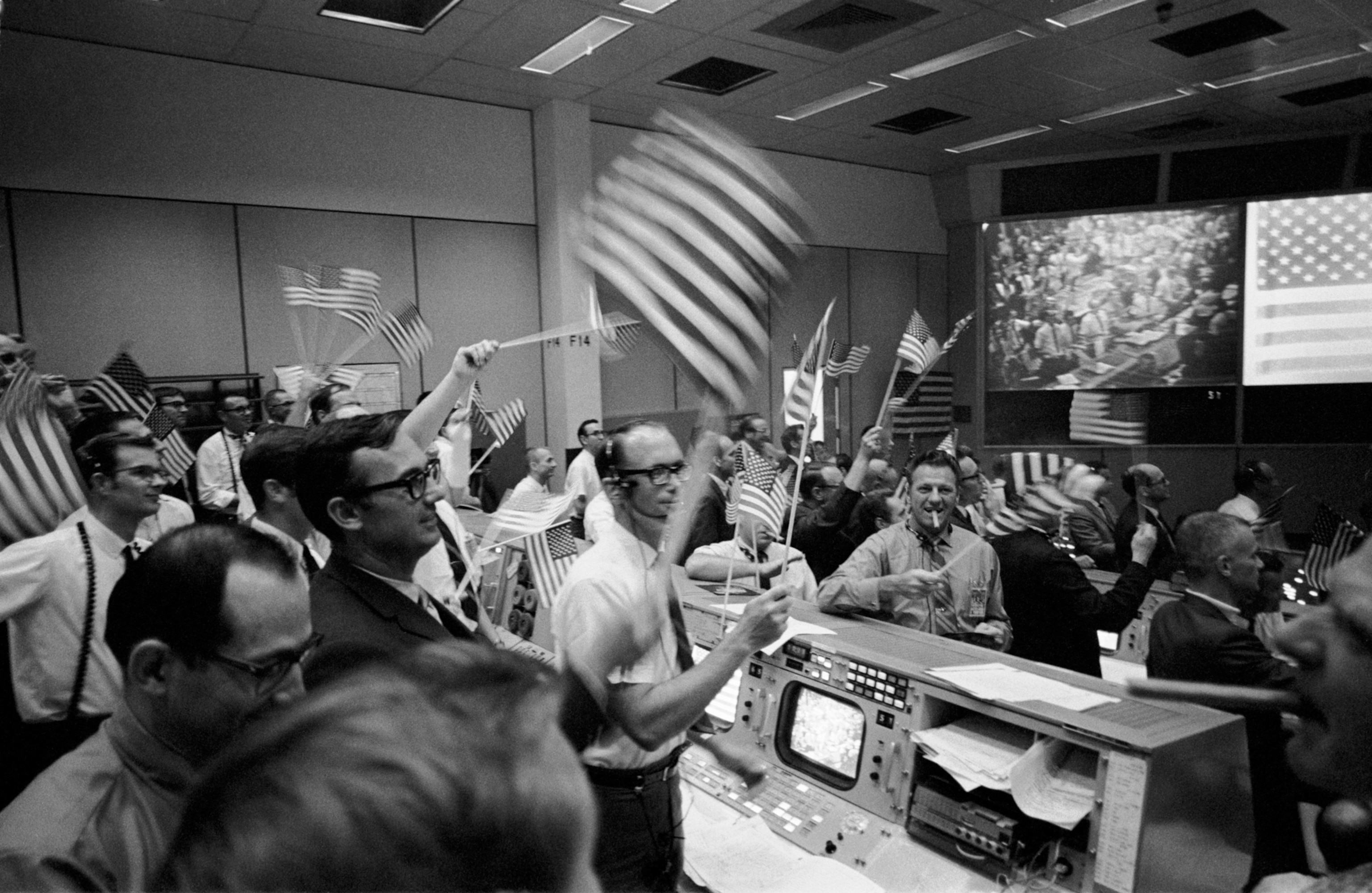Now Reading: The true story of the secret program that brought Nazi scientists to the U.S.
-
01
The true story of the secret program that brought Nazi scientists to the U.S.
The true story of the secret program that brought Nazi scientists to the U.S.

On July 20, 1969, a crew of American astronauts successfully landed on the moon for the first time. Though only three of them were in the spacecraft, thousands of people had contributed their brainpower to put the astronauts in flight.
Among the contributors: German scientists who had been members of the Nazi Party. The United States recruited them in the years after World War II under a federal program called Operation Paperclip.
The program remains a controversial chapter in American history, when U.S. officials incorporated former Nazis into American life and institutions. Here’s how Operation Paperclip got off the ground.

Over 100 German scientists on the Von Braun Rocket Team gather at Fort Bliss, Texas in 1946, including Wernher von Braun, Ludwig Roth, and Arthur Rudolph. Many pictured worked to develop the V-2 Rocket at Peenemünde, Germany, before coming to the United States after World War II. While in the U.S. they worked on various rockets, including the Explorer 1 Space rocket and the Saturn rocket at NASA.
Photograph by Donaldson Collection/Getty Images
What is Operation Paperclip?
In the spring of 1945, Allied forces were closing in on Nazi Germany, and the end of the war in Europe was in sight. Officials started to make plans for what the post-war world would look like—and that involved securing some of Germany’s best scientific minds to support American technological advancement.
After all, Americans were simultaneously impressed and terrified by what they had considered to be German technological supremacy during the war. They braced themselves for a next-generation Wunderwaffen (wonder weapon) and heard reports of fatally precise weapons like the V-1 cruise missile and V-2 rockets.
The U.S. worried that France or the Soviet Union would poach the best German scientists, especially as the Cold War intensified. “The U.S. had to deny German scientists from the Soviet Union by keeping them in the U.S.,” says Brian Crim, professor of history at the University of Lynchburg and author of Our Germans: Project Paperclip and the National Security State. Americans wooed scientists that had formerly worked for the German Nazi Party with promises of contracts and a home in the U.S.
Operation Paperclip—sometimes called Project Paperclip—was overseen by the Joint Intelligence Objectives Agency. It hoped to harness this technological expertise to develop America’s aeronautics, military, and space programs. Lasting officially until 1947, but continuing on through similar programs until 1962, Operation Paperclip brought 1,500 scientists from Germany and Austria to the United States, where most of them became citizens.
When deciding which German scientists to recruit, U.S. officials worked off a list of 15,000 scientists curated by German engineer Werner Osenberg during the war. As Allied troops advanced in 1945, German officials panicked. They tore up Osenberg’s documents and attempted to flush them down a toilet at Bonn University. The almost-destroyed documents were recovered and helped American officials decide which scientists to select.
Why is it called Operation Paperclip?
The program’s name boils down to the use of paperclips as a kind of earmark on candidates’ files. According to according to journalist Eric Lichtblau’s book The Nazis Next Door: How America Became a Safe Haven for Hitler’s Men, recruiters vetted scientists to learn whether they were current members of the Nazi Party or sympathetic to the party’s core tenants—officially, at least. And so, officials “placed paperclips at the top of security dossiers for the scientists that interested them,” Crim explains.
“The reason for this was to indicate to investigators that the scientists should only receive the most cursory review of their record. Most scientists were Nazi party members or belonged to prohibited Nazi organizations, including Schutzstaffel, also known as the SS. The paperclip basically announced, ‘Don’t look too closely—this guy is one of ours.’”
Although no U.S. agencies have publicly addressed the vetting process used during Operation Paperclip, independent investigations by scientists and journalists have raised questions about the backgrounds of several scientists in the program.

The V2 rocket is pictured at an underground factory. V2 rockets were used by the Nazis against Britain in the closing stages of World War II.
Photograph by IWM/Camera Press/Redux

Former President Harry S. Truman (left) examines rocket models on Nov. 3, 1961, at the newly opened NASA headquarters in Washington, D.C. Accompanied by former NASA Administrator James E. Webb (right), President Truman was presented with a collection of rocket models for his Presidential Library in Independence, Missouri.
Photograph by Heritage Space/Heritage Images/Getty Images
How Operation Paperclip helped fuel the space race
In the 1950s and 1960s, the American space program accelerated as the U.S. and Soviet Union vied to put a man on the moon. Some beneficiaries of Operation Paperclip played a role in supporting America in this so-called space race.
One participant was German scientist Wernher von Braun. Von Braun’s crowning achievement in Germany had been the creation of the V-2 rocket, a ballistic missile that could strike long-distance targets. He also had been an officer in the SS, an elite paramilitary organization dedicated to the Nazi Party.

J-2 engines for the Saturn IB and Saturn V launch vehicles are lined up in the assembly area at Rocketdyne’s manufacturing plant in Canoga Park, California.
Photograph by NASA

Marshall Space Flight Center finishes hydrostatic testing on the Saturn V S-IC stage fuel tank. The Saturn V S-IC stage was crucial for lifting the entire Saturn V vehicle, including the Apollo spacecraft, from the launch pad.
Photograph by NASA

A J-2 engine undergoes static firing. Developed under the Marshall Space Flight Center, the J-2 engine was used during the Saturn IB and the Saturn V program and was propelled by liquid hydrogen and liquid oxygen.
Photograph by NASA

The 363-foot tall Apollo 11 spacecraft launches from the Kennedy Space Center at 9:32 a.m. EDT on July 16, 1969. Apollo 11 was the United States’ first lunar landing mission.
Photograph by NASA
More scientists would face scrutiny in the subsequent decades.
“The public history of many of the famous names was whitewashed from the start, but a few intrepid journalists in the 1970s and 80s unearthed some of the details of Paperclip’s deliberately shoddy vetting process,” Crim says.
Arthur Rudolph was one of Rickhey’s subordinates at Mittelwerk, where he managed rocket production. In the United States, Rudolph helped develop the Saturn V launch rocket that enabled the American mission to the moon in 1969.
(Read more about rocket launches here.)
In the early 1980s, the Justice Department assembled a war crimes case against Rudolph. As a result, the rocket scientist renounced his American citizenship and left the country in 1984 to avoid trial.

Flight controllers celebrate the successful landing of the Apollo 11 mission in the Mission Operations Control Room in the Manned Spacecraft Center. Apollo 11 marked a pivotal moment in human history as Neil Armstrong and Buzz Aldrin became the first people to land on the Moon and walk on its surface.
Photograph by NASA
Operation Paperclip’s complicated legacy
Historians are still grappling with how crucial the scientists recruited by Operation Paperclip were to the U.S.’s successful space program.
“I think the lasting impact on American science is less than people imagine,” Crim says, pointing out that “Wernher von Braun saved the U.S. a few years of research and development when it came to missiles […] but many experts question just how necessary the rocket team was to help the U.S. space program.”
Crim emphasizes that the program brings up uncomfortable questions about national security and naturalization. “Paperclip rewarded hundreds of devout Nazis with coveted U.S. citizenship, excellent jobs, and public acclaim at the same time Holocaust survivors were kept out of the country.”
These ethical questions continue to cast a dark cloud over the program, especially as details about scientists involved in Operation Paperclip continue to emerge and American space exploration expands. Crim asks, “Is it justifiable to accommodate yourself to a toxic ideology if you are a scientist? Is science truly apolitical? Paperclip is one case study involving these questions, but certainly not the last.”




























